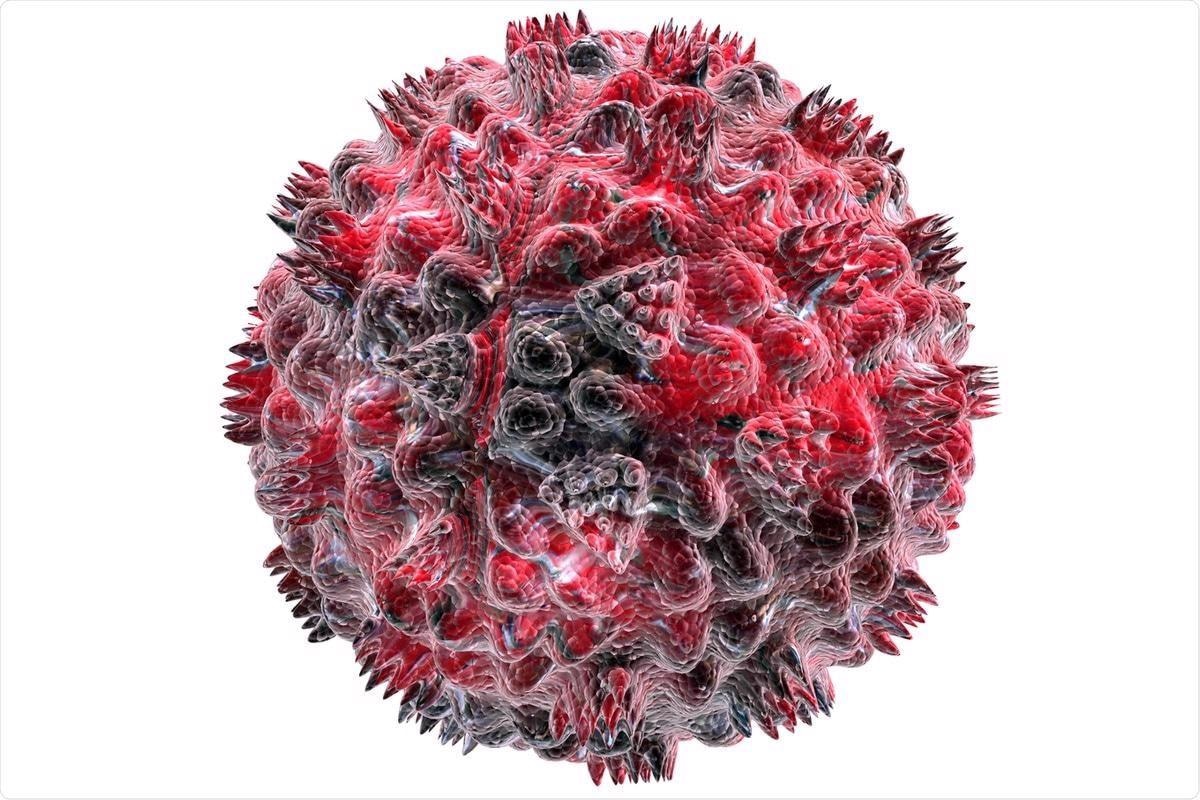Viral infections can wreak havoc on human lives and livelihoods. For instance, the highly infectious severe acute respiratory syndrome coronavirus-2 (SARS-CoV-2), the causal agent of the ongoing coronavirus disease 2019 (COVID-19) pandemic, has claimed more than 5.88 million lives and infected over 424 million individuals worldwide.
The SARS-CoV-2 Delta variant has been characterized as more infectious and virulent than other variants. In addition, previous reports have indicated that the Delta variant had significantly increased the mortality rate and hospitalization compared to the original SARS-CoV-2 strain and its other variants.

Study: A highly virulent variant of HIV-1 circulating in the Netherlands. Image Credit: Federov Oleksiy / Shutterstock.com
Background
One of the main concerns associated with viruses is their susceptibility to error-prone replication. This causes a high rate of mutations that may alter the transmissibility and virulence of the virus. Human Immunodeficiency Virus (HIV) is an RNA virus that is constantly monitored for its altered virulence. This virus has claimed more than 33 million lives worldwide, and around 38 million individuals live with the virus.
HIV-1 first emerged around 1920 in Kinshasa, Democratic Republic of the Congo, and had subsequently diversified into many subtypes by 1960. The subtypes and the most common circulating recombinant forms (CRFs) between the subtypes pursued varied routes for global transmission.
In due course, these strains developed strong relations with ethnicity, geography, and mode of transmission. Previous studies have highlighted the difference in virulence between CRFs and subtypes via assessing the genotypic effects on virulence.
These studies have also focussed on the association between the virus and the host and other epidemiological factors. Scientists have stated that the co-receptor used for cell entry is the main underlying factor that causes the difference in virulence between subtypes and CRFs. The most common methods to estimate HIV-1 virulence involve measuring the concentration of viral particles in blood plasma (viral loads) and determining the concentration of CD4+ T cells in peripheral blood (CD4 counts). CD4+ T cells track immune system damage caused by the virus.
Clinicians prescribe antiretroviral drugs to reduce viral load and restrict the decline in CD4 count; however, an unsuccessful antiviral treatment would lead to acquired immunodeficiency syndrome (AIDS). Scientists reported that both the viral load and the decline in CD4 count are driven by genes. Hence, researchers believe that both these properties could change with the emergence of new HIV-1 variants.
A New Study
A new study published in the journal Science reported the presence of a subtype-B variant of HIV-1 with remarkably high virulence, circulating in the Netherlands during the past two decades.
The current study is part of an ongoing study (the BEEHIVE project), where researchers identified a group of seventeen individuals with a specific subtype-B viral variant.
Participants have been enrolled in eight cohorts across Europe and Uganda in the Beehive project. All the participants were in their early stage of infection, and their viral samples were fully sequenced.
Among the seventeen participants, fifteen belonged to the ATHENA study in the Netherlands, one from Belgium and one from Switzerland.
Scientists replicated the Beehive test finding with the ATHENA data to examine the viral variant in more detail. They analyzed data from 6,706 participants in ATHENA with subtype-B infections and observed a significant enhancement in viral load in individuals with this viral variant. In this study, the authors referred to this variant as the “VB variant.” “VB individuals” are those who were infected with this variant, and individuals who were infected with a different strain of HIV are referred to as “non-VB individuals.”
Key Findings
Scientists reported that the VB variant has circulated in the Netherlands since the late 1990s. They reported that enhanced virulence is a property of the virus rather than a confounding property of individuals in the transmission cluster. Additionally, the absence of viral load evolution inside the clade of VB variants reflects that the enhanced virulence is a property of the whole clade.
According to the World Health Organization, 350 CD4 cells/mm3 indicate advanced HIV. If an individual infected with the VB variant is left untreated, the advanced HIV stage would be reached within nine months from the diagnosis, compared to thirty-six months for non-VB males (30 to 39 years old). In the older age group, the advanced stage is reached more quickly.
VB variant has been highly monitored in the context of the Dutch HIV-1 epidemic. This study revealed that the VB variant doubles the rate of CD4 cell decline. After adjusting for its higher viral load, this has been estimated via counts and T cell percentages.
Interestingly, scientists reported that per-parasite pathogenicity, which is high in the VB variant, is a heritable condition. The genetic sequence suggested that the VB variant emerged in the 1990s due to de novo mutation and not via recombination. The variant has increased transmissibility with an unknown molecular mechanism of virulence.
Conclusion
The current study reported the presence of a highly virulent variant of subtype-B HIV-1 in the Netherlands. In the future, in vitro studies are required to determine the role of the viral genotype and uncover the virulence mechanism at the molecular or cellular level. In addition, scientists believe that there is a high possibility to observe a higher replicative capacity of the VB variant.